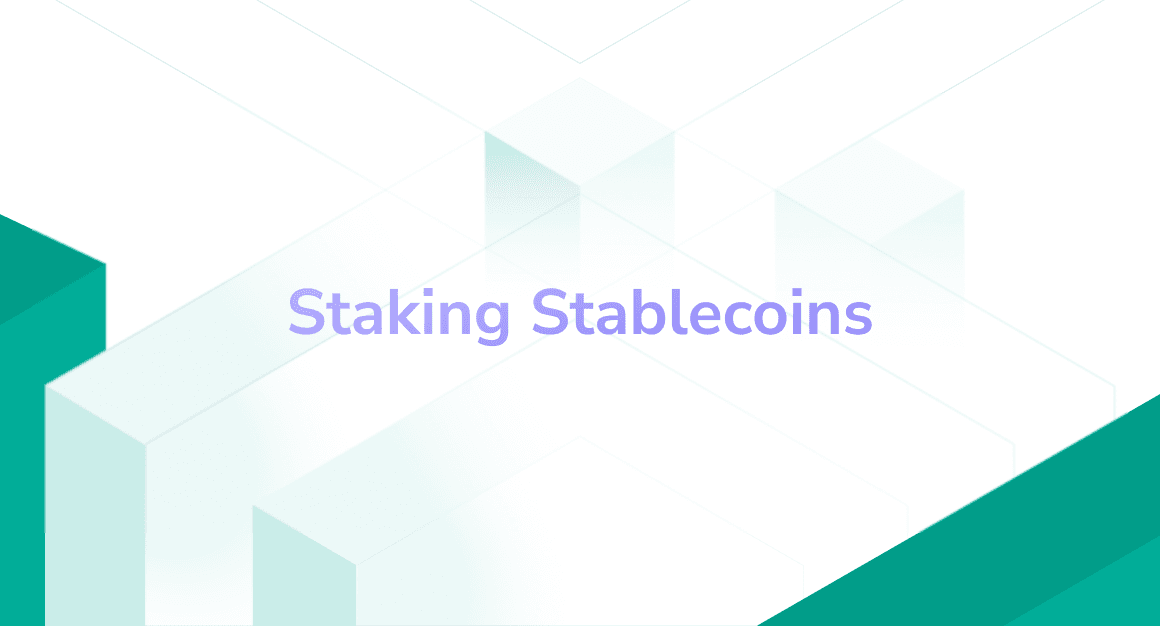~4 min
Staking Stablecoins in 2024
StakingY.com helps you navigate the world of stablecoin staking, guiding you to the highest APY options for USDT, USDC and other stablecoins. These yields usually exceeding traditional savings accounts for USD or EURO.
When discussing the potential for earning passive income through cryptocurrencies, the term "stablecoin staking" is often used. However, this terminology is technically incorrect, particularly when referring to the most popular stablecoins, USDT and USDC. Both USDT and USDC cannot be staked because they do not operate on a proof-of-stake blockchain, which is a fundamental requirement for staking. Staking is a process that involves participating in network operations and securing a blockchain through the holding of tokens, a mechanism not applicable to USDT and USDC due to their design and underlying technology.
Stablecoin Function and Income Generation
USDT and USDC are stablecoins pegged to the US Dollar and are commonly used for their stability and utility in cross-border transactions. Given their inability to be staked, investors looking to earn passive income from these assets must explore alternative methods.
One such method is lending USDT and USDC on exchanges or lending platforms. This process does not contribute to network security as staking does but offers a way to generate income by providing loans. Investors can earn interest on their lent stablecoins, similar to earning interest on money held in a traditional bank savings account.
Key Differences Between Staking and Lending
The primary difference between staking and lending lies in their contribution to the cryptocurrency ecosystem. Staking is a mechanism that secures the network and validates transactions, integral to the operation of proof-of-stake blockchains. Lending, on the other hand, is a financial activity that provides liquidity to borrowers without directly contributing to network security.
USDT Staking Rates
As we mentioned before, while USDT cannot be directly staked since it does not operate on a proof-of-stake blockchain, you can still earn APY by lending your USDT. You can earn 3-30% APY lending USDT on both centralized and decentralized platforms. While centralized exchanges like Binance generally offer about 10% APY, DeFi protocols might offer up to 30% but with higher risks. Key risks include borrower defaults, USDT’s stability, and smart contract vulnerabilities. Always choose platforms with robust security and understand the risks before lending.
Earn high APY for stablecoins on exchanges
In the context of lending USDT and USDC on crypto exchanges or lending platforms, an attractive feature for investors is the offer of relatively high annual percentage yields (APYs), often ranging from 10-15%. These high APYs serve as a compelling incentive for holders of stablecoins to lend out their assets on exchanges like OKX, Bybit or Gate.io. From the perspective of the exchanges, this mechanism is not just about providing returns to investors; it plays a critical role in their operational liquidity. By offering high interest rates, exchanges attract significant amounts of USDT and USDC, which can then be utilized to meet various liquidity needs. This includes facilitating trades, offering margin lending, and ensuring that the platform can accommodate large withdrawals without hitches. Essentially, the high APY acts as a magnet for stablecoin deposits, which in turn supports the exchange's liquidity management strategies and enables smoother operations. This symbiotic relationship underscores the importance of understanding the mechanics behind these high yield offers, recognizing that while they present an opportunity for income, they also serve the crucial function of bolstering the exchange's liquidity.
Reward Options for Stablecoins Holders
For those holding USDT and USDC, the choice between custodial lending on exchanges and non-custodial lending offers different risk profiles and control levels. Custodial lending involves entrusting your stablecoins to a platform like Nexo, Youhodler or Earnpark that manages the lending process, potentially offering higher convenience but requiring trust in the platform's security. Non-custodial lending allows investors to retain control over their private keys, offering greater security at the cost of convenience.
Conclusion
The incorrect use of "stablecoin staking" to describe earning income from USDT and USDC can lead to confusion, as these stablecoins cannot be staked due to their lack of a proof-of-stake blockchain. Instead, lending emerges as a viable method for USDT and USDC holders to generate passive income. Understanding the difference between staking and lending, and the options available for USDT and USDC, is essential for investors looking to make informed decisions in the cryptocurrency space.

Ezt érdekesnek találhatja:
~4 min